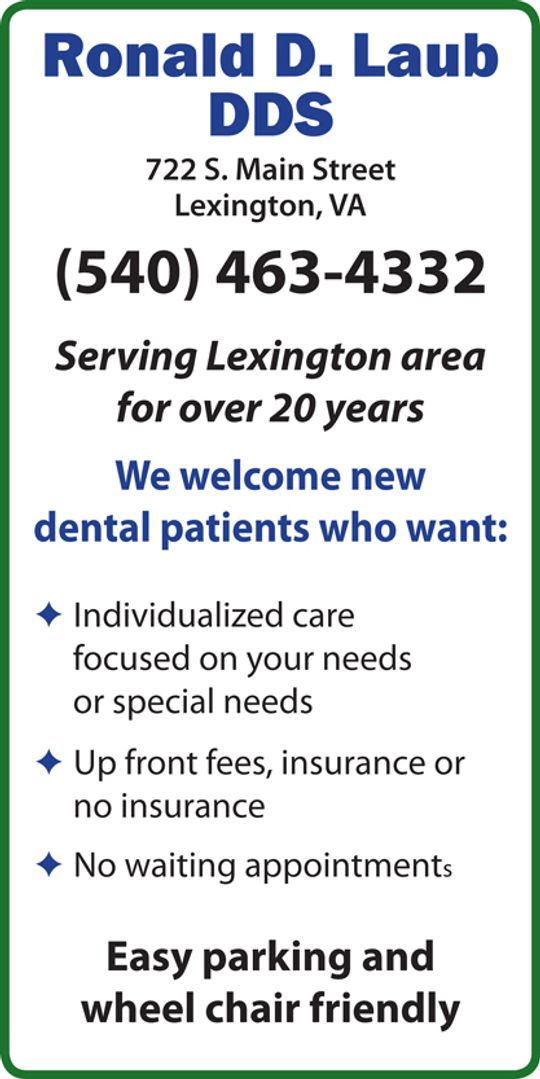Housing Challenges Study Addresses Costs, Lack Of Options
After two years of work collecting and compiling data on housing, the Central Shenandoah Planning District Commission released its regional housing study earlier this year, offering insight on the current housing data throughout the region and potential solutions for how to address housing concerns.
In a press release announcing the release of the study, Lexington Mayor Frank Friedman – who also serves as the chair for the CSPDC – highlighted the critical need for accessible housing in the region and the role the housing study could play in supporting localities, stating, “Ensuring a steady supply of housing, including workforce, affordable, and market rate housing inventory remains a top priority for localities across our region. The release of the CSPDC Housing Study offers county, city, and town staff reliable insights into housing challenges, viable solutions, and actionable steps toward implementation. This study will undoubtedly become a vital resource in our region’s ongoing efforts to ensure housing stability and continued growth.”
The area of study covered five counties: Augusta, Bath, Highland, Rockbridge and Rockingham, as well as the cities of Buena Vista, Lexington, Staunton, Waynesboro and Harrisonburg and the several incorporated towns throughout the counties, including Goshen and Glasgow.
Data collected throughout the region shows that the majority of households (71 percent) include at least one worker, and 40 percent of the householders throughout the region are over the age of 60. In the Rockbridge region (which covers the county, Lexington, Buena Vista, Goshen and Glasgow), the number is higher, with 6,630 of the more than 13,000 households being occupied by senior citizens. The study found that approximately a quarter of the households in the region led by someone age 62 or older spend more than 30 percent of their income on housing and “may make choices between housing costs and other necessities like medication and food.”
The study also found that single householders above the age of 62 are either cost-burdened or severely cost-burdened at “twice the rate” of households of married couples led by someone age 62 or older, concluding that “single seniors cannot afford median rent or owner costs and will likely struggle to afford housing if they do not own their home free and clear.”
Age of the housing stock throughout the region was also taken note of. Of the housing stock available in the county, 57 percent of it was built before 1990, with 15 percent of it being built in or before 1939. Less than 20 percent of the available housing stock (16.8 percent) was built after the year 2000. A separate housing study done in Lexington, which included a windshield survey to report on the quality of the housing stock, reported higher percentages of older houses, with 76 percent of the city’s houses being built before 1970 and a third of the houses built before 1939.
The study found that 40 percent of the households in the Rockbridge region are classified as low-income and 40 percent of the employees in the region are commuting from other housing markets. Homeownership rates in the county are “on par” with the rest of the Central Shenandoah region with 76 percent of homes being owned by their occupants. Lexington and Buena Vista have lower homeownership rates (55 and 54 percent, respectively). The study concluded that Lexington’s lower ownership rate can “primarily be attributed to a large student population,” but the rate in Buena Vista – and specifically among households aged 35-54 and 60-74 – suggest “limited availability of homeownership opportunities.”
The study further found that the majority of the housing stock available throughout the Rockbridge region are “site-built, single-family detached units.” Such units account for nearly 80 percent of the more than 16,500 housing units in the region. The remaining 20 percent is split nearly evenly between multifamily residents and mobile and manufactured units.
The data collected also showed that single-bedroom units made up around 8 percent of the housing stock in the region, even though nearly 30 percent of households are comprised of single individuals.
Nearly half of the region’s housing stock consists of three-bedroom units, while two-bedroom units account for 26 percent and units with four or more bedrooms make up the remaining 19 percent.
The conclusion noted that “while many households prefer extra bedrooms for other uses, the lack of small units for small households may contribute to affordability challenges. A threeperson family could share a two-bedroom space without creating an overcrowded condition, but while 84 percent of households include three or fewer people, only 35 percent of units have two or fewer bedrooms.”
The study also offered proposed solutions for Rockbridge County, Lexington and Buena Vista to address the increased cost of housing and lack of diversity in the housing stock within their respective jurisdictions.
For all three localities, the study offered two priority solutions and at least one secondary solution.
Rockbridge County’s first priority solution is to increase housing supply by “streamlining and simplifying land development regulations following comprehensive plan update” by addressing inconsistencies and ambiguities in current zoning ordinance, changing the zoning ordinance to allow for moreaffordable housing types and streamlining the approval process.
The second priority solution is to “position the Economic Development Authority to support housing development” by offering grants and other incentives “to increase the financial viability of housing projects.”
The secondary solution proposed for the county is to “evaluate long-term options to improve the effectiveness of the Housing Choice Voucher program.”
For Buena Vista, the study recommends the city “pursue more flexible zoning options and streamline regulations to create diverse housing opportunities” such as through accessory dwelling units, cottages, and smallscale multifamily units.
Similar to the county, the second priority solution is to “examine and expand incentives” for property development and improvement within the city, possibly through tax abatement programs or providing grants to homeowners. The city was also encouraged to “lay the foundation” for a mixed-use development as a secondary solution.
Lexington’s first priority solution suggested by the study focused on increasing its supply of lower-cost housing options through development of financial incentives and streamlining land-use regulations.
The second priority for the city is to continue to “evaluate and determine potential for underused properties.”
Lexington was given two suggested secondary solutions to housing needs: Continuing to amend the zoning ordinance to allow new types of housing for owners and developers, and to look into working with the Virginia Resources Authority to take advantage of ways to fund local affordable housing efforts.
The study was funded by a grant from Virginia Housing and was developed by industry experts at Virginia Tech’s Center for Housing Research and HousingForward Virginia. The study team worked closely with local staff and regional stakeholders and engaged in extensive outreach to develop solutions to market challenges that align with local goals and build on existing plans and interests.
For more information on the study or to review its findings, visit https://connect.cspdc.org/ cspdc-housing-study.





